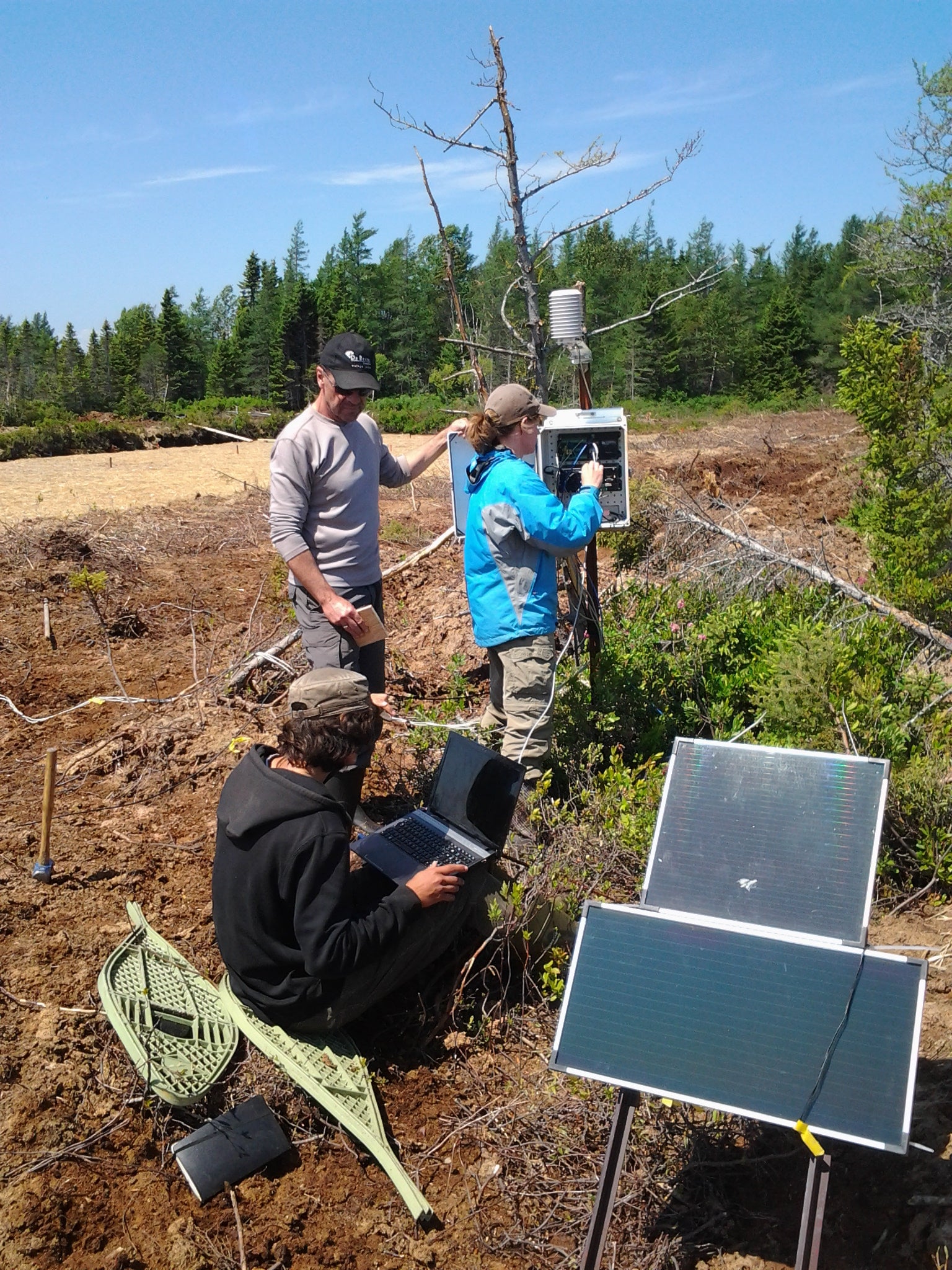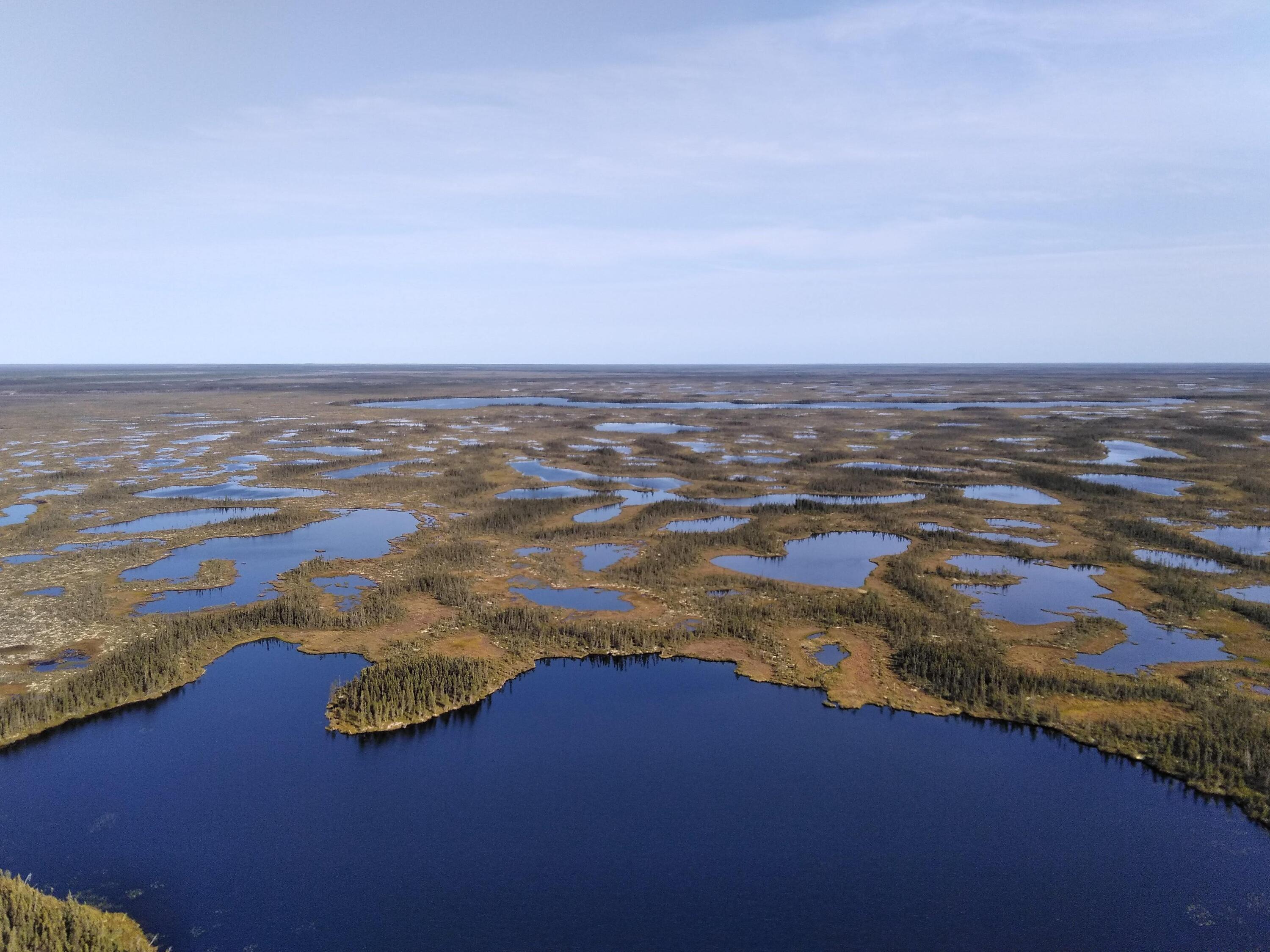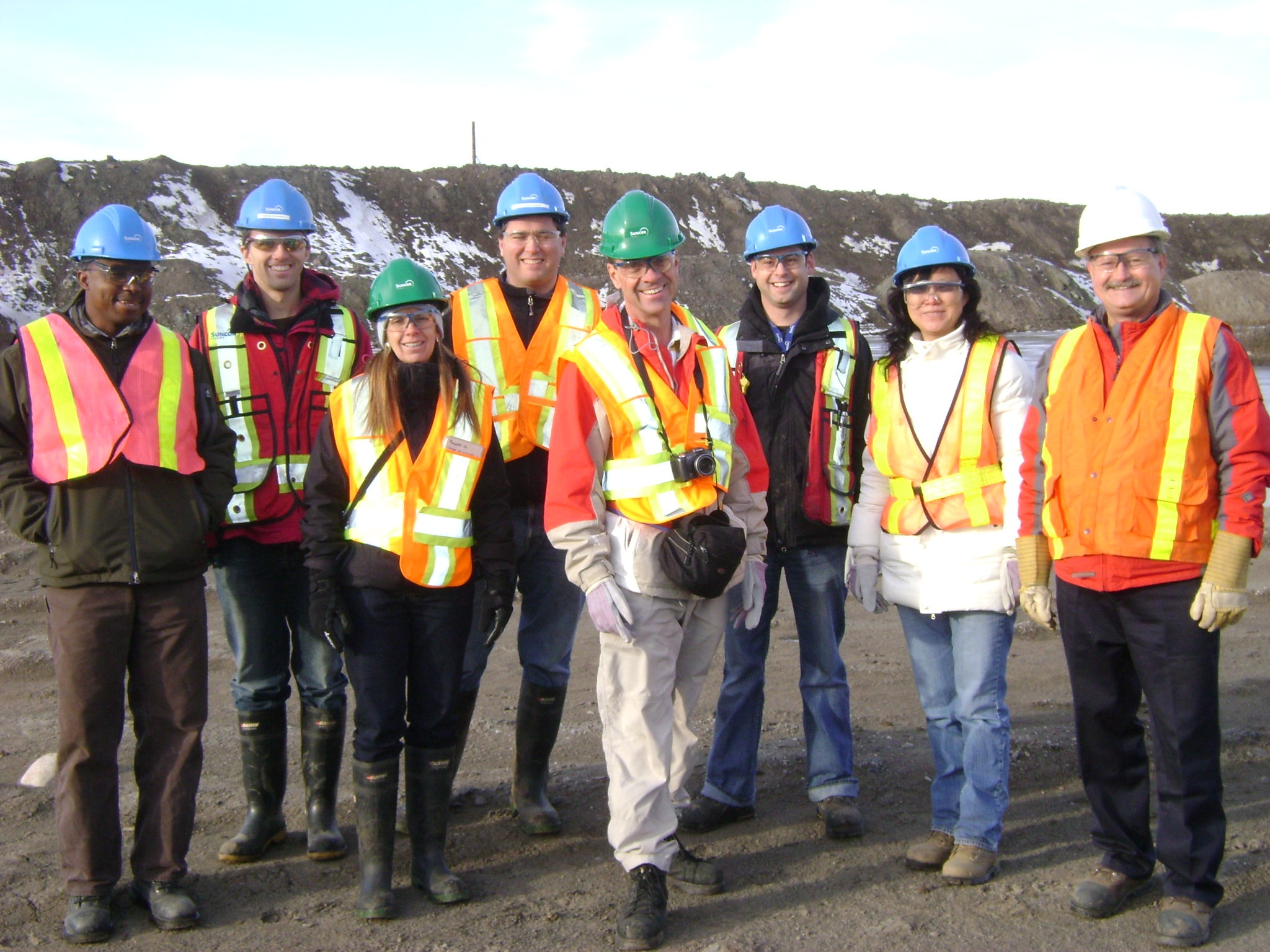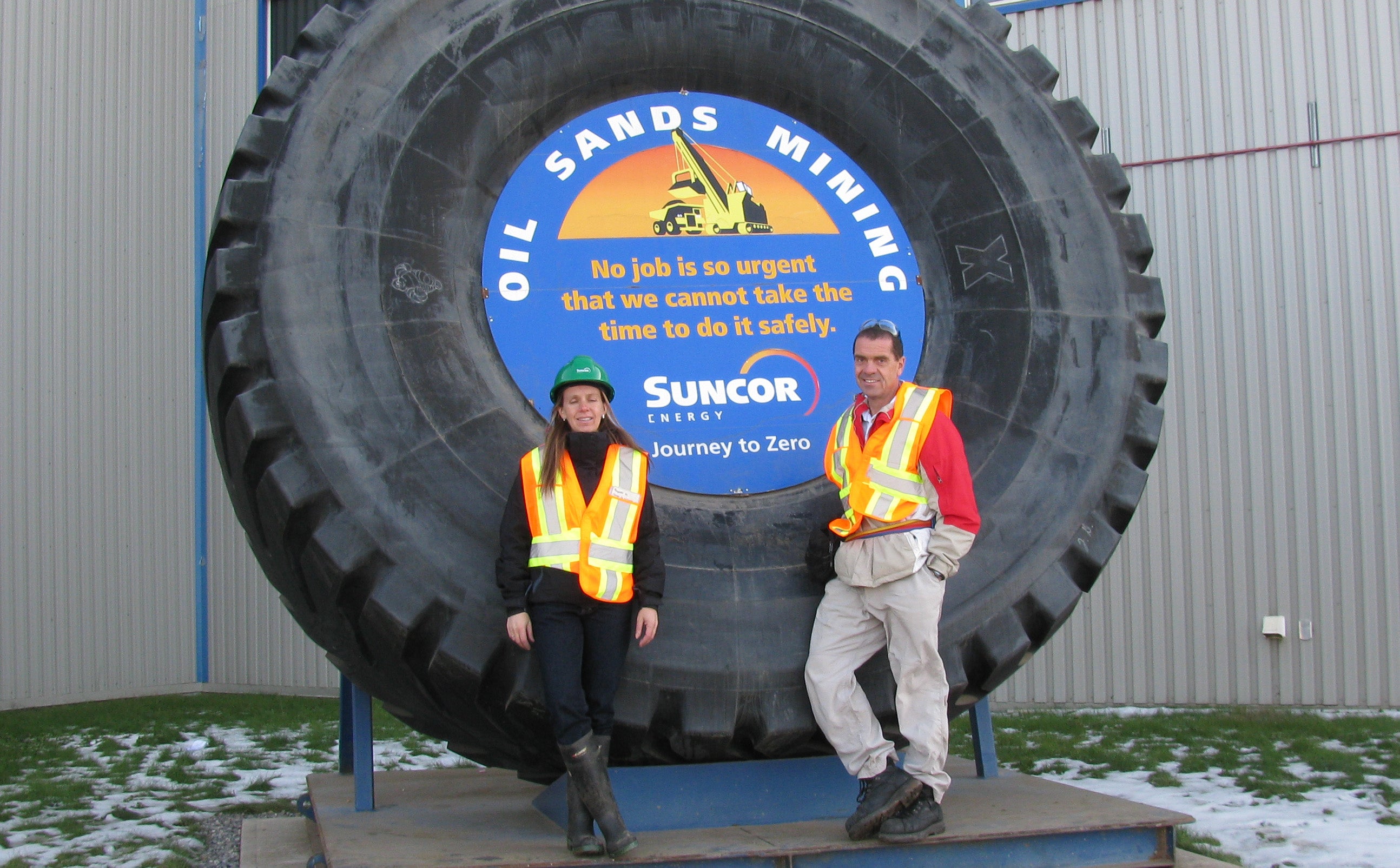



Introduction
For more than 30 years, Water Institute member and professor within the Department of Geography and Environmental Management at the University of Waterloo, Jonathan S. Price conducted research and taught on the hydrology of wetlands, leading to extraordinary contributions in wetlands science and education.
This past September, under cover of the pandemic, Jonathan attempted to quietly retire from teaching and move to the countryside north of Kingston, Ontario, but we could not let this occasion go without fanfare. An internationally recognized researcher and educator, Jonathan specialized in the hydrology of peat-dominated wetlands,

with a focus on peatland restoration and most recently on creating peatlands following oil sands extraction. His research examined how surface water, groundwater, water quality and carbon biogeochemistry responded to disturbances and how these functions can be recreated.
Before coming to Waterloo, Jonathan held positions within the Geography Departments at Queen's University, Kingston, ON, and Memorial University, St. John’s, NL, having gained his PhD at McMaster University, Hamilton, ON.
Jonathan pioneered cross-disciplinary breakthroughs on contaminant transport in peatlands, including solutes and hydrocarbons. Highly cited and respected in his field, he authored and co-authored over 200 peer-reviewed journal articles on topics including soil-water physics, micrometeorology, water quality, contaminant transport, ecology, soil development as well as basin-scale hydrology of wetlands. Jonathan led the Wetlands Hydrology Research Laboratory, one of the foremost authorities on peatland science in the world. Over his career he supervised 42 Masters students, 14 PhD and 8 post-doctoral fellows.
Although officially retired, Jonathan maintains his research. His lab in Waterloo continues to make significant contributions to peatlands science. He is still supervising his remaining students and postdoctoral fellows, and Jonathan will continue to serve as an associate editor for the journal Mires and Peat.
Reflections from Jonathan
After more than 30 years as a professor, I reflect back on my career, and share these insights with you, my former colleagues and collaborators, for what it is worth. There are lots of research highlights and milestones, classes I’ve enjoyed teaching, and even some committee’s I have liked. These pale, however, to what I view most important and memorable. That is, the myriad research collaborators, especially students, whom I have mentored and befriended, whose lives I have changed in sometimes subtle, and sometimes profound ways. This includes undergraduate students, but especially graduate students, as we chose each other to work with. In many cases, I had funds and ideas that needed someone special to do the hard work. In other cases, students led me down research pathways I had not anticipated. These relationships are the basis of what, at least in my mind, has been a successful and enjoyable career. Not surprisingly, these students seemed younger and younger as my years accumulate.
Seeing the passion, revelations and progress in so many on the verge of their own careers, has been my main joy. There have been students uncertain of their potential and capacity, whom I’ve mentored to become confident and capable scientists and citizens. There are those that are among the smartest and most talented people I’ve ever known, whom I perhaps guided just a bit. From all of them I have learned, not just the details of their work, but of their hopes, dreams and fears as they move on in life. Seeing their personal growth has been rewarding, but for some our decision to work together brought life-changing circumstances, such as bringing family to Canada, or their meeting someone special and starting a family themselves. It is an axiom we too often forget, that the things we do have so many unforeseen consequences. It is humbling for me, to know that I have influenced so many. I consider that my legacy, professionally at least.
Accolades and memorable moments from the community

Hudson Bay Lowlands
Brian Branfireun
Professor, Department of Biology
Helen Battle Research Professor 2021-22
Associate Editor, Biogeochemistry
Western University, London, Canada
The great Canadian Peatland and the great Canadian Peatland Hydrologist
I first met Jon as a master’s student, and over my career have learned much of what I know about wetland hydrology from him through his research and publications. Despite knowing Jon for almost 30 years, the first time I had the opportunity to
work with him as a collaborator came much later in the Hudson Bay Lowlands linking hydrological and biogeochemical processes in the second largest peatland complex in the world. Over the course of the project, Jon and I worked together on important problems with some exceptional students who have gone on to be the next generation of peatland scientists. Most importantly, I had the opportunity to experience the endless expanse of the Lowlands from the air and on the ground with Jon as my guide – a career and life highlight that I will never forget.

(L) Scott Ketcheson and (R) Jonathan Price
Scott J. Ketcheson,
NSERC Canada Research Chair in Hydrological Sustainability
Assistant Professor
Faculty of Science and Technology
Athabasca University
It is hard to believe that Jon Price has retired. It has been an absolute honour and a pleasure having been mentored by Jon throughout my career. More important than the integral role he played along my academic journey was the friendship
that we developed. Jon, as I’m sure you can imagine, so many fond thoughts and good memories cross my mind when reflecting back on the years, and it is near impossible to pick out a few of the brightest highlights to mention here. So for now, I’ll simply say a whole-hearted thank you, and that I wish you and Alice the very best in your retirement. I could not imagine having had a better, more sincere friend and mentor over the years. I look forward to reminiscing about some of those fond memories with a large dram of scotch sometime soon.

Maria Strack
Professor, Faculty of Environment
Dept. of Geography and Environmental Management
Canada Research Chair in Ecosystem and Climate
University of Waterloo
My first introduction to Jon was just days after finishing my undergraduate degree as I embarked on research that would become my doctoral study. Now, 20 years later I’ve gotten to know Jon as a doctoral committee member, supervisor during my postdoctoral work, collaborator, and, most recently, a colleague in the Department of Geography and Environmental Management at University of Waterloo. While Jon would often give us plant-lovers a hard time for always staring at the ground with our butts in the air, we’ve managed to have many interesting conversations about the hydrology of mosses and how this
links to the carbon stored in peatlands (the main focus of my research program these days). He has definitely taught me the value (and joy) of collaboration, both with scientists across disciplines and with partners in government and industry that apply the results of our work. His work continues to have a lasting impact on peatland management in Canada and around the world through his critical contributions to peatland restoration and his contribution to training exceptional researchers. His former students are working as faculty members at universities across the country, in government agencies, non-governmental organizations and industry. Jon also taught me the importance of taking time to enjoy the places we work and people we work with. Even though he’s retired, I hope we can still find some time soon to enjoy a drink while discussing peatland hydrology.
Richard M. Petrone
Professor, Faculty of Environment
Dept. of Geography & Environmental Management
University of Waterloo
I transferred to UW to do my PhD under Jon’s supervision in 2000 on peatland restoration, in Eastern Quebec. I learned a great deal during my time working with Jon, and have many great memories. I quickly realized that Jon had a unique way of getting the most out of his students; the evening discussions over a glass of scotch during my field seasons helped me in many ways, not the least of which is an ongoing affection for peat! After my first appointment at WLU in 2002
Jon continued as my primary mentor, guiding me in my early career decisions and the importance of work – life balance. We continued to work together in peatland and reclamation research in 2010, and do so to this day. I have benefited immensely from his knowledge and infectious love of everything hydrological and his friendship in general. I miss being able to stick my head in his office to chat; especially our pre-defence tradition of a small glass of scotch in his office. Jon has proven not only to be the most important mentor, not only in my career, but in my life. As well, he has become not only a great collaborator and friend, but really is like a brother to me.

(L) Mike Waddington and (R) Jonathan Price
Mike Waddington
Canada Research Chair in Ecohydrology
School of Earth, Environment & Society
McMaster University
Jon was my hydrology TA at McMaster and he hired me as a research assistant to work with him in the James Bay lowlands in the summer of '88. Jon taught me a lot about peatland and hydrology fieldwork that summer. My fondest memory of that summer was our 5km trek into the heart of the James Bay Lowlands. It wasn't for the data we collected (was it ever published Jon?) and certainly wasn't for the thousands of bugs we killed either.
But rather it was for observing his infectious passion for peatlands and asking questions which taught me that research is both fun and rewarding. While I am likely the only person that applied, got accepted and then turned Jon down for a M.Sc., Ph.D. AND a PDF, I did collaborate with Jon on several peatland restoration projects for a dozen or so years while a Prof at MAC. Because I consider Jon to be the World's top peatland hydrologist and a great friend this has easily been the highlight of my career. "Fun research with friends", the motto that I adopted from that inspirational James Bay trek, is always worth the wait.
Dave Rudolph
Professor, Department of Earth and Environmental Sciences
University of Waterloo
A Master Integrator of the Hydrologic Sciences
I have had the great fortune to have been able to collaborate with and continually learn from Jon over the last 20 years or so as both a colleague and a friend. Jon is the definition of a multidisciplinary scientist and has never acknowledged the need for silos or boundaries between research disciplines. His infectious enthusiasm for integrating complex hydrologic understanding into the resolution of
challenging practical problems is remarkable and he set a very high bar for all of us around him. This was particularly evident in his approach to the reclamation of large areas of the landscape disrupted by the excavation of oil sands in northern Alberta. His approach of combining laboratory investigation with field-scale pilot site assessment, merged with his uncanny knack of understanding nature from observing experimental results, has provided such unique insight into so many different problems. A clear example of which is the sustainable restoration of surface mined landscapes within such fragile ecosystems, something all Canadians and so much wildlife will be eternally grateful for!

Photo: Fort McMurray, The Peatland Ecology Research Group (PERG).
Fereidoun Rezanezhad
Research Associate Professor, Faculty of Science
Department of Earth and Environmental Sciences
University of Waterloo
I am proud to call Prof. Jonathan Price my friend and mentor, and I attribute much of the reason I stayed in collaboration to his excellent guidance and leadership. Jon created an environment that was very conducive to my development as a scientist, and he supported me intellectually and as
a friend well beyond the obligations of an advisor. In many aspects, I am trying to model the advising of my own students after his example. I can still remember the time I spent with Jon in the cottage and his office discussing my research work on transport and fate of contaminants in peat soils and other scientific matters on how the complex nature of peat properties controls water flow and solute transport and affects hydrogeochemical functions in peatlands.

(L) Line Rochefort and (R) Jonathan Price
Line Rochefort
Full professor at the Department of Plant Sciences
NSERC Industrial Chair in Peatland Management
Université Laval
Professor Jonathan Price – an outstanding peatland hydrologist
What first comes to my mind about working in collaboration with Jon are the long evenings at the field houses, among mountains of electric wires, themocouples, dataloggers, welding tools and the like, training students to be self-sufficient with their measurement equipment’s. To reward them for their long hours of work, a bottle of Scotch would appear late evening…
On a more serious note, I would like to tell you more about Jon’s career et how much I appreciated working with him.
I would like to start by stating in French what first comes to my mind to describe this scientist: “Dr Price est vraiment une sommité mondiale dans son domaine”, meaning that he is an authority in the field of hydrology of peatlands. What is nice about Dr Price is that he is always keen to share his knowledge and he is an unassuming man. He has made great contributions to improving our fundamental understanding of peatland ecosystems through studying the hydrological functioning and processes of peatlands all across Canada and South Africa. But, before detailing his contribution to science, let me note my various interactions with Professor Price. I first met him as a graduate student in 1987 during a field excursion following a conference in Alberta while I was a master student and he, a doctoral student. He kindly helped me in learning about the basic functioning of peatlands and was patient with my learning curve of English (being francophone). That 3-4 days of interactions must have impressed me professionally because after a hiatus of six years of no further interactions, he was the first person who I thought of when asked by the peat industry to develop an innovative approach for the restoration of degraded peatlands and to develop a culture system for producing Sphagnum fibers for an absorbent board for Jonhson & Jonhson Inc.. Thus, we started research collaboration in 1993, and have collaborated continuously since then in the study of wetland lands, realizing that a hydrologist and a plant ecologist make a good combination to understand basic functioning of these wet terrestrial ecosystems.
A true Canadian field hydrologist: Few people in Canada can speak authoritatively about environmental conditions of our peatlands and wetlands coast to coast. Dr Price is such a person. He started his graduate research in the early 1980s by studying the subarctic wetlands of Saskatchewan and the wetlands of the James Bay lowlands in Ontario, uncovering the origins of salinity in these continental Canadian marshes. He then took his first academic appointment in Newfoundland, taking the opportunity to study the peatlands of the island as well as a large wetland complex in Labrador. In the nineties, once he was based Ontario universities as a junior academic, his work concentrated more on the degraded peatlands of New Brunswick and Québec as well as the potential impact of hydro-dams in Ontario. Since 2010, a greater focus of his studies has been in northern Alberta nearby Fort McMurray on fen restoration, while still being active as a field hydrologist in New Brunswick, Québec and Ontario and also with satellite projects in Manitoba and British Columbia.
The whole gradient of wetlands: Wetlands exist in many forms and the presence of a thick layer of peat, or not, in the soil structure has a great impact on their hydrology. Most often a researcher will focus on peat wetlands or mineral wetlands but rarely studies both systems. In a similar way, a researcher usually decided to only studies freshwater wetlands and not saline wetlands, or vice-versa. This is not the case with Dr Price. His breadth of knowledge, in all the wetland types of Canada, is impressive – throughout his career he has studied remote subarctic wetlands, coastal marshes of James Bay, fog-fed blanket bogs and heathlands of Newfoundland, prairie sloughs, large bog-fen patterned peatlands of the North, Typha marshes, the whole declination of the bog-fen gradient (raised bog, poor fen, moderate-rich fen, rich fen, saline fen, ladder fen), cedar-hemlock bog or hypermaritime rainforest bog complexes of coastal British Columbia, riparian zone of streams, kettle-hole peatlands and wetlands, and urban wetlands in Ontario. Outside of Canada, he has immensely improved the knowledge of spring mires, coastal wetlands and the peat swamp forests of South Africa. The trajectory of his career makes one realise, solely from his research, how great is the diversity of peatlands and wetlands of Canada. He has been one of the main contributors to the development of the classification system for the wetlands of Canada and because the classification is logically hydrologically driven, it has been adopted (with modifications to local conditions) by the government of New Zealand. This classification system, published in 1997, is still current and being used by all our regulators and environmental agencies in Canada.
Birth of peatland restoration ecology: Besides the fundamental contributions of Dr Price on the functioning of wetlands in Canada, he has been a pioneer in the emerging field of restoration ecology and more specifically of peatland restoration ecology. His paper published in 1996: “Hydrology and microclimate of a partly restored cutover bog” was the first to report on the active hydrological restoration of a peatland and on the partial success if only the ditches of formerly drained peatlands were blocked. What is impressive with this foundational paper is that not only the effects of rewetting are reported but he analytically exposed the problem of poor Sphagnum peat mosses regeneration (the residual peat soil matrix suction being greater than what nonvascular Sphagnum mosses can generate), thereby identifying the key abiotic filter to overcome to succeed with Sphagnum re-establishment in degraded peatlands. This was the foundational paper in the field, but by far the key paper that led to the success of
developing a successful method to rehabilitate peatlands with Sphagnum mosses was: Price et al. 1998 – “Energy, moisture considerations on cutover peatlands: surface microtopography, mulch cover and Sphagnum regeneration”. Before this paper, several peatland scientists had attempted to restore peatlands by trying to reprofile the residual bare peat substrate into the natural microtopography of hummocks and hollows of peatlands (~ 30 to 40 cm). However, it eventually was realised that a threshold much more important was necessary to overcome in term of the microclimate surrounding the regenerating mosses. Consequently, the application of a thick mulch layer of straw (~15 cm) to recreate a favorable moist microclimate at the soil surface once the mosses have been reintroduced became central to the Canadian method of peatland restoration, known as the Moss layer transfer method. This method is now applied in several countries in the world and it all stems from this key paper (you add mulch or you perish). His studies on the rehabilitation of peatlands have resulted in 43+ scientific peer-reviewed articles providing strong evidences on the logic of the Canadian peatland restoration approach. Reflecting his acknowledged leadership on the restoration of peatland hydrology (rewetting), European peatland ecologists asked him to write a chapter-review in a globally acclaimed book by scientists and practitioners alike: Price et al. 2016. Peatland restoration and hydrology in Peatland restoration and ecosystem services: science, policy and practice edited in the UK. Dr Price continues to be active in this field as, while major advances have been made towards recreating the right conditions for the complete recovery of surface vegetation (particularly mosses), we still do not understand why we succeed to restore the surface vegetation and associated water table but with a water table not as stable as in natural peatlands. His latest CFI grant (92018) for the construction of a Wetland Ecosystem Terrain Systems Simulator (WETSys) should help towards understanding about how to reconstruct the functional 2-layer soil system (the diplotelmic state) of natural peatland soils which appears to be key in water regulation function.
Big environmental problem – big science: Since the 1990’s, humans have become more aware of their global impact on ecosystems. Peatlands are no exception, and Canada has a responsibility to manage sustainably these valuable wetlands given their great coverage of Canada (12 to 17%) but representing only 2.8% of the terrestrial area. Large-scale ecosystem studies are not a problem for Dr Price probably because his experience of seeing so many wetlands in different landscape conditions makes it is easy for him to grasp a holistic approach of investigation. The first large-scale environmental assessment Dr Price did about wetlands was to predict the effect of hydro-dams (the Grand Canal project) on coastal wetlands of James Bay, including potential impacts on the regional climate. Thereafter, he pursued research on the impact of climate change on peatlands with an international team involving Finnish and Irish researchers from which he published a series of papers on the effect of water table draw-down (as a surrogate for climate change) on the hydrology of a patterned fen peatland. Lately, he has been addressing two big industrial challenges in Canada. First, how to restore the wetland landscape of the Oil Sand Region after open pit mining extraction. Second, how to minimize the impact of diamond mining in the middle of huge peatland complexes in the James Bay lowlands. Given Dr Price’s capacity to tackle extensive landscape issues, he was the first scientist that came to my mind when I visited the wetlands of South Africa in 2004 and was exposed to their basic lack of understanding in terms of peatland hydrology. As peatlands are very rare in South Africa, their conservation has to start by understanding the source of water feeding the ecosystems. When I alerted Dr Price about the great needs in hydrology in order to be able to take actions to save the last peatlands of South Africa, he was attracted to the challenge and through his contributions several South African young scientist have been trained to know how to stop further degradation and conserve their remaining peatlands.
Maybe one the greatest qualities of Dr Price as a scientist is his open mind about other fields of science and adapting to the need of research (as I sometimes ask him) and this from a totally different scale of his basic training in the first place (typical ecosystem hydrology and modelling). One example is his contribution to solve ecohydrological relations of bryophytes (minute plant mosses) in peatlands – such as his work in 2001 on “Developing hydrological threshold for Sphagnum recolonization or in 2015 on “Role of morphological structure and layering of Sphagnum and Tomenthypnum mosses on moss productivity and evaporation rates”. Thus, Dr Price is a master in gaining understanding in the functioning of peatland complexes at the large landscape level of the Canadian North as well as to engaging in the minuscule world of mosses through process orientated research.
Lastly, I would like to highlight two qualities of Dr Price’s research skills. First, he likes to design process-orientated research: be it from understanding the transport of gas within the tiny pores of the peat soil to scaling up on how climate change will impact the functioning of peatlands. He has made great contributions to the fundamental advances of hydrology in peatlands and his many publications will be useful for several generations of students to come. Second, Dr Price has a great capacity to synthetize results and writes well; even for non-hydrological specialists, his publications are reader-friendly. This quality has been noted by several of his colleagues as reflected in the many invitations he has received to write circa 10 review syntheses and the close to 20 book chapters.
I would like to conclude by saying that Dr Price has been an innovative and productive scholar for thirty years, and is the most knowledge peatland hydrologist in Canada. He is intellectually engaged and generous with his time. Jon, Thank you for having accepted to be my career long collaborator.
Today,
World
Wetlands
Day is
the
perfect
opportunity
to
wish
you
well
in
retirement
and
sing
your
praises.
From
all
of
us
at
the
Water
Institute
and
the
University
of
Waterloo,
we
wish
you
all
the
best.
Many
thanks
to the
colleagues
above
for
contributing
reflections
to
this
article.